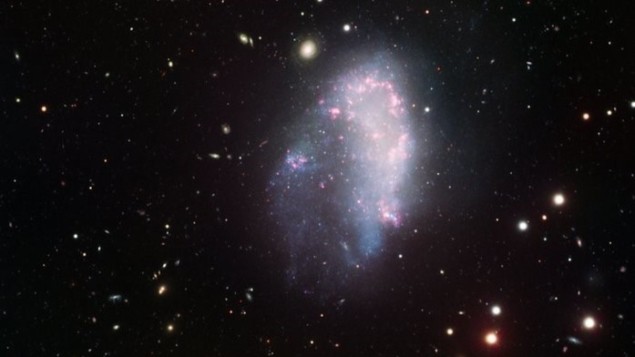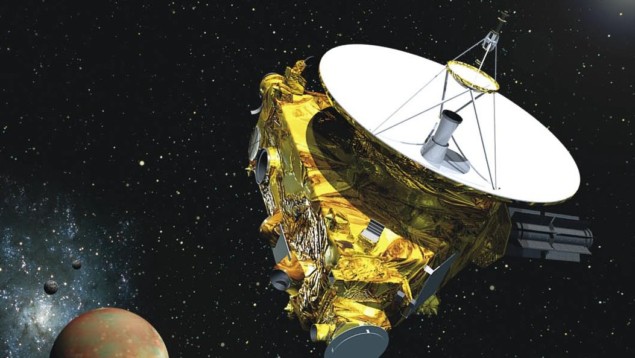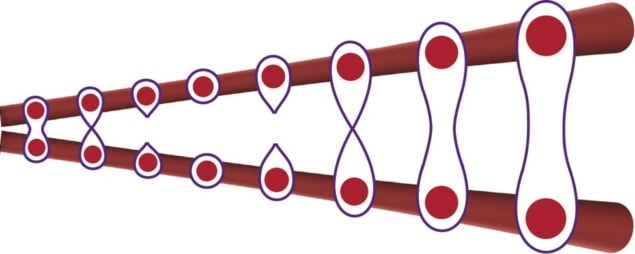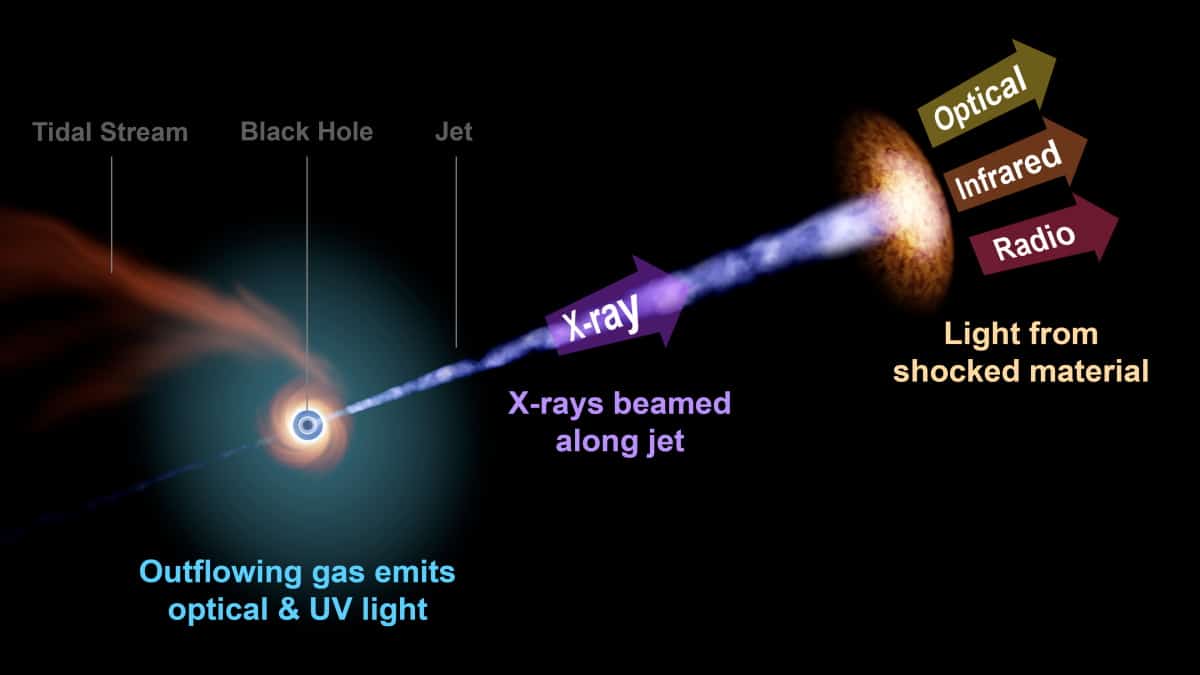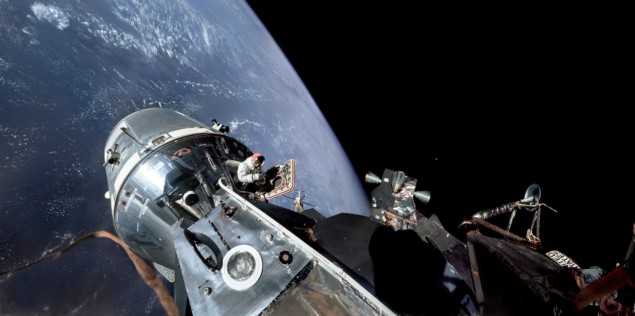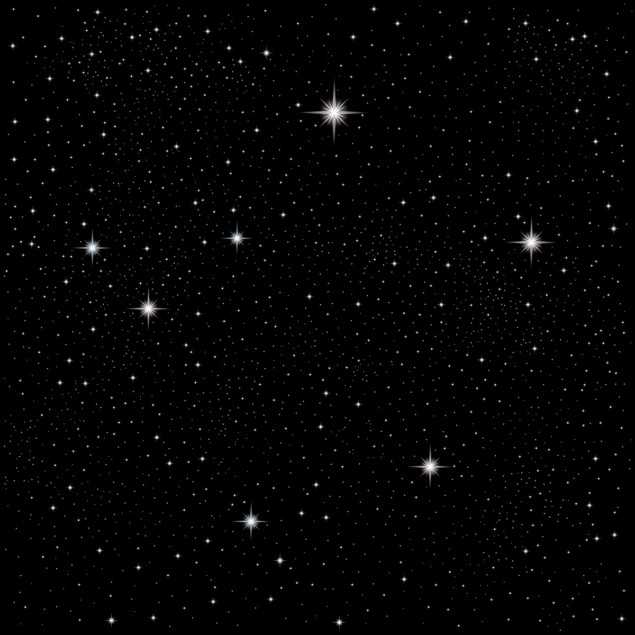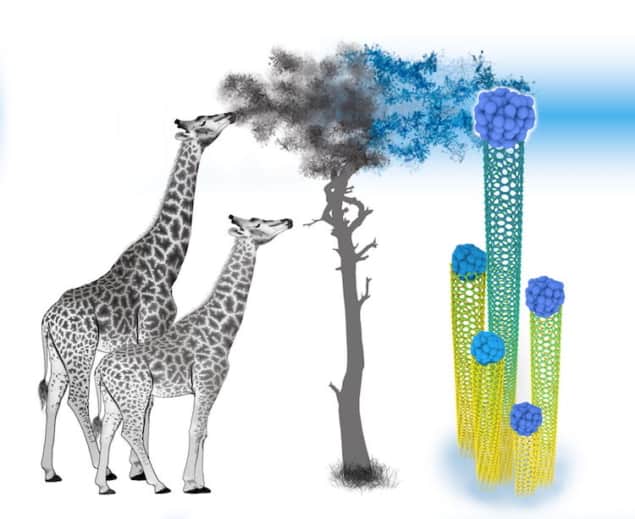Dwarf galaxies appear to be missing dark-matter halos
16 Aug 2022
Holding together The dwarf galaxy NGC1427A is in the Fornax galaxy cluster. Observations of the distortions of the galaxy are not in line with the presence of a dark matter halo. (Courtesy: ESO)
A study of the gravitational distortion of dwarf galaxies appears to support a theory of modified gravity rather than the existence of dark matter – the latter being a key component of the Standard Model of cosmology.
